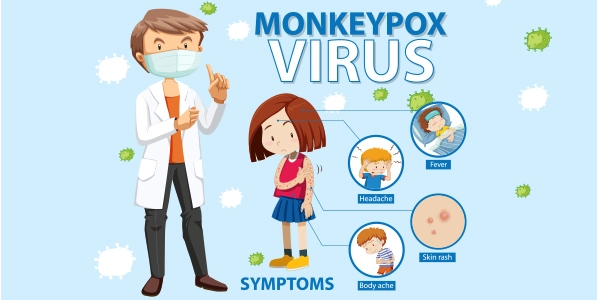Monkeypox (Mpox) is a rare viral infection that has attracted international concern due to recent outbreaks. Though less severe than smallpox, the disease can still cause significant illness. Understanding how it spreads and how to prevent infection is key to protecting yourself and your community. In this article, we explain the causes, symptoms, and effective prevention strategies for Monkeypox.
What Is Monkeypox?
Monkeypox (Mpox) is a zoonotic viral disease caused by the monkeypox virus — part of the Orthopoxvirus family, which also includes the smallpox virus. The virus was first identified in monkeys in 1958, but its primary carriers are rodents and other small mammals. Human cases were first reported in the 1970s in Central and West Africa. Today, cases have been detected worldwide.
For more detailed guidance, visit the World Health Organization (WHO).
How Does Monkeypox Spread?
Mpox can spread through various routes:
- Person-to-person contact: Respiratory droplets, skin contact, bodily fluids.
- Animal-to-person transmission: Bites, scratches, or handling infected animals.
- Surface contamination: Contact with objects or materials used by an infected person.
Symptoms of Monkeypox
Symptoms generally appear 5 to 21 days after exposure and may include:
- Early symptoms: Fever, headache, muscle aches, chills, swollen lymph nodes.
- Rash development: A painful rash starting on the face and spreading to other areas, progressing to fluid-filled blisters that scab over.
In most cases, Mpox is mild and resolves within 2 to 4 weeks. However, severe cases can occur, especially in individuals with weakened immune systems.

How to Prevent Monkeypox
Preventing Monkeypox requires good hygiene, responsible behavior, and in some cases, vaccination. Follow these key steps:
1. Maintain Personal Hygiene
- Wash hands frequently with soap and water.
- Use alcohol-based hand sanitizers when needed.
- Avoid touching your face, especially eyes, nose, and mouth.
- Clean surfaces regularly with a trusted disinfectant such as Logic Sept.
2. Limit Close Contact
- Avoid skin-to-skin contact with symptomatic individuals.
- Do not share personal items like towels or bedding.
- Wear gloves and masks when caring for someone infected.
3. Be Cautious with Animals
- Do not handle wild animals, especially rodents or primates.
- Avoid bushmeat consumption or handling.
- Keep pets away from infected persons or contaminated objects.
4. Clean and Disinfect Surfaces
- Disinfect shared spaces and frequently touched surfaces.
- Dispose of contaminated materials (tissues, gloves) properly.
5. Consider Vaccination
- The smallpox vaccine offers partial protection against Monkeypox.
- High-risk individuals may be eligible for vaccination during outbreaks.
What to Do If You Suspect Infection
- Seek medical advice: Contact a healthcare provider for diagnosis.
- Isolate: Limit contact with others until cleared by a doctor.
- Follow medical instructions: Manage symptoms and monitor your health.
Conclusion
Monkeypox is preventable with the right precautions. Through good hygiene, responsible behavior, and awareness of vaccination options, you can protect yourself and others. If you suspect infection, consult a healthcare professional promptly.
For more ways to keep your environment safe, explore our guide: Effective Hand Disinfection Guide.